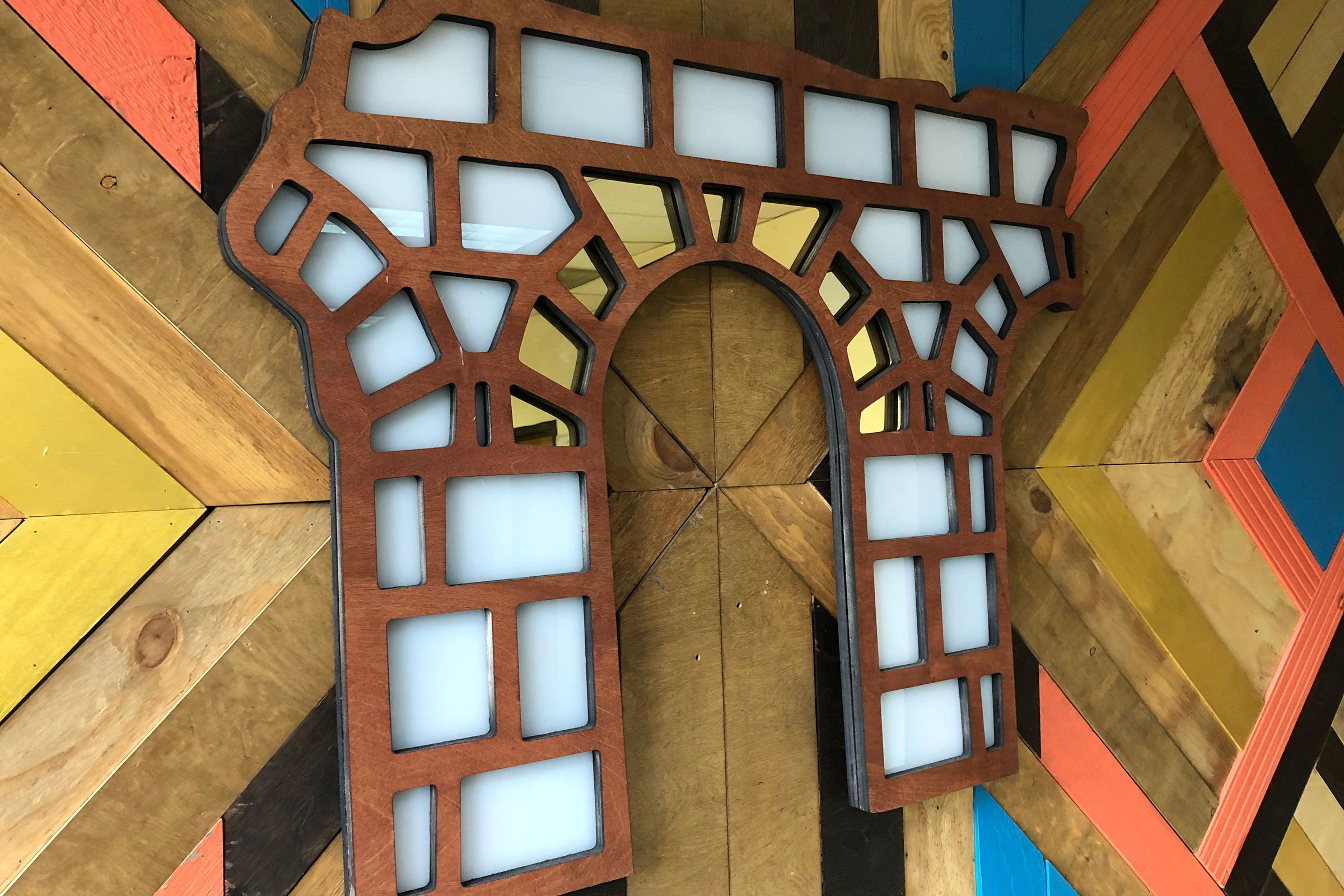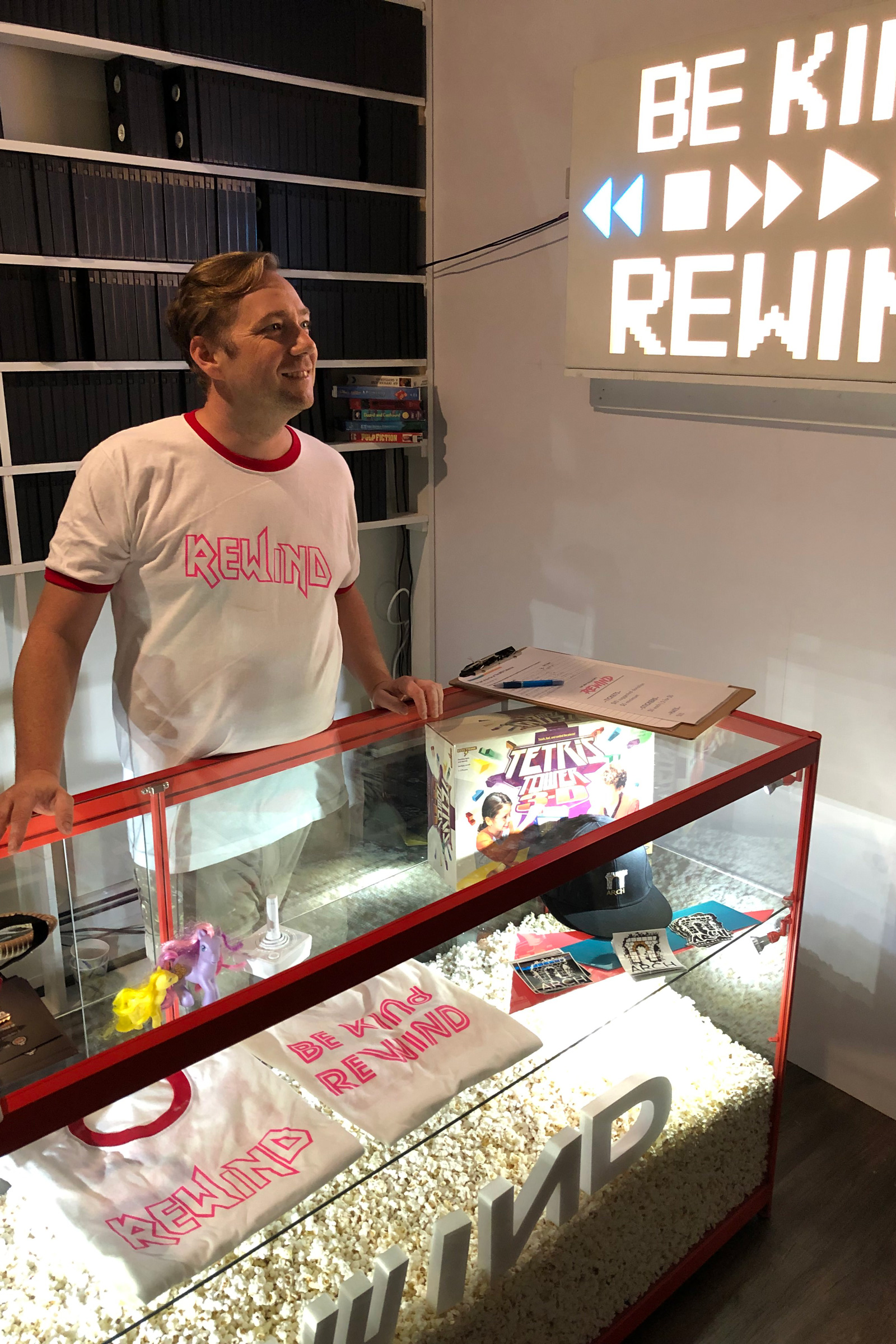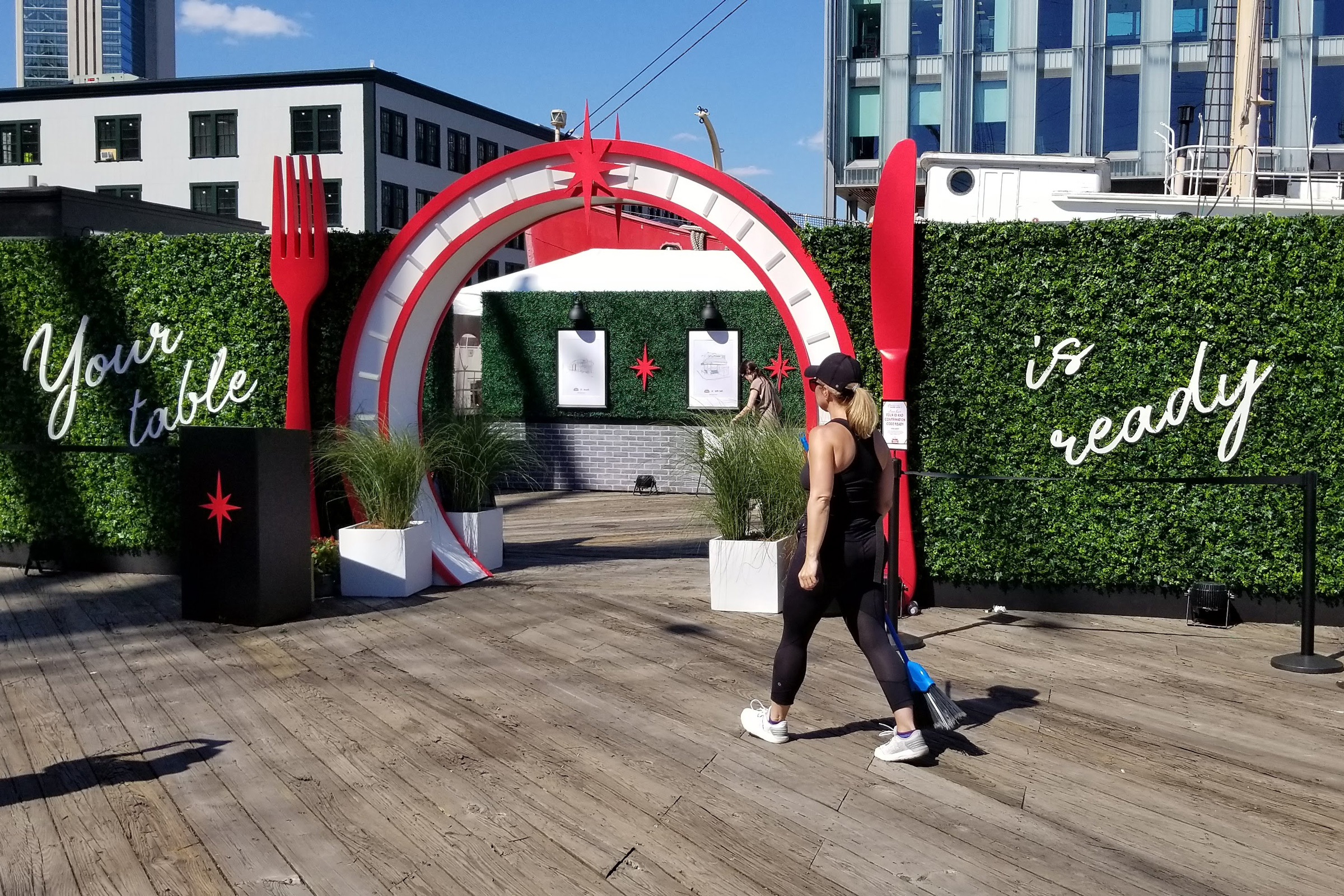Story at a glance:
- ARCH Production & Design looks at how designers can reduce waste like production offcuts.
- ARCH uses a large grinding machine to break acrylic scraps into small pellets sorted by color, melting down the pellets to make new creations.
- The firm also sticks to water-based paints for finishes, avoids spray painting as much as possible, and uses powder coating or other more permanent finishing methods.
Working in an inherently wasteful industry poses a daily internal struggle as fabricators—loving what we do, being creative, and making a living versus recognizing the waste typically produced.
The ethos of our company, ARCH Production & Design, is rooted in living sustainably and doing the least harm while doing the most good. We talk a lot about how to reduce waste in the design, as our work serves the entertainment industry through events, nightlife, festivals, photo and film production, fashion, retail, and experiential marketing.
We have tested and compiled a few key tactics in an attempt to minimize the impact and damage caused by a single-use mindset, but a baseline is needed. Most of the waste created during our production process for the applications outlined above can be divided into the following categories:
- Production Offcut, Overages, and General Waste – 15%
- Travel Packaging and Shipping Waste – 5%
- Post-Event Waste – 80%
How to Upcycle and Reuse

Photo courtesy of ARCH Production & Design
The area of production offcut, overages, and general waste is a relatively easy area to manage, as it takes place in the studio, where you have the most control. The key is design, which affects the entire creative production process.
On a recent ASID panel, someone noted, “Design impacts lives.” Our design team has a great opportunity to steer the direction of any given project from the start in a sustainable way, such as dictating overall sizes and finishes. By creating designs based on readily available material sizes, we are able to minimize the amount of offcut, or leftovers, produced.
After design, dealing with the CNC (computer numerical control) machine and offcut is the next major issue. A common cutting tool in fabrication, the CNC is popular for its speed and accuracy and because it allows for 3D design techniques throughout the design build process. However, it is the primary producer of production waste in our shop by volume/weight. For wood waste we try to offset by sponsoring tree planting. Recycling plywood offcut has its challenges due to the glue involved.
The CNC offcut from acrylic fabrication is the most challenging, and we are getting creative. Our ideal solution is using a large grinding machine to break up all the acrylic scraps into small pellets sorted by color. Then we melt down the pellets into new creations. Because we have so much plastic offcut, this recycling process is high on the list of green initiatives and improvements we look to make in the shop in the coming months and years. It can set a precedent for how companies like ours manage their acrylic waste.
As for finishes, our goal is to stick to water-based paints, to stay away from spray painting as much as possible, and use powder coating or other more permanent finishing methods. The water-based paints are much less toxic than oil- or lacquer-based paints, both for the staff and the environment, and much easier to clean up. Powder coating, or anodization, lasts much longer as a finish and does not result in the off-gassing or landfill waste that spray paint does. Plus, the heavy metals from the spray paint are very toxic for the staff.
We also have a saying “Shop the Shop,” which means our team seeks something that will work that’s already in stock. Every project we do and bring back, we take apart—salvaging and saving as much of the material as possible for a future project, whether that uses steel, wood, hardware, or electronics. Our recent Rube Goldberg trailer and the buildout of our immersive gallery exhibit “Be Kind Rewind” both reflect our team’s practices.
Our team has been upcycling and recycling commercial artwork for a decade. I personally take great joy in repurposing the remnants of past commercial projects into new ones. This is also a great opportunity for our designers to “Shop the Shop” and design based on what we have. Sometimes that makes designing a bit more challenging, but we believe it is worth it in the long run for the planet by reducing the number of new materials we use.
The inherent challenge with our reuse approach is storage, so every one to three years we purge. This past year we donated everything to the Artists at Garner Arts Center in Haverstraw, NY. Other years we donate the materials to organizations like Materials for the Arts in Long Island City, Film Biz Recycling, or Big Reuse. It’s a win-win for all involved, as the materials go to good use and we earn a charitable donation tax credit.
Travel, Packaging & Shipping Waste
In the age of Amazon, it often seems impossible to get away from shipping waste. We try our best to plan ahead and consolidate any online orders and shipments to decrease the number of boxes and plastic bubble fillers as well as the carbon emissions from multiple pickups and deliveries.
The greater issue is the large quantities of packaging created internally. A good portion of the packing supplies are, in fact, biodegradable and made from recycled paper, and reusable moving blankets for padding are also encouraged. However, there are still many times when we have to use foam or cling wrap to protect a finished paint job or item. I often store the leftover usable foam wrap in my office, and before any more are cut fresh for a new job, the leftovers must be used.
Shipping crates and pallets are other areas of big waste. Instead of building custom crates that clients either trash or return too damaged to be reused, we’ve found ULINE crates to be a sustainable and reusable choice. That said, we have also upcycled old wood crates or pallet wood into reclaimed furniture or décor.
As for transport, we plan to change our fleet to electric and biodiesel; our current corporate car is a hybrid and our new work truck is diesel, which can be easily converted. I take the commuter train into New York City for any meetings, and we encourage our staff to carpool, especially when we work across the five boroughs.
Post-Event Waste

Photo courtesy of ARCH Production & Design
This is the absolute mood-dropping, major waste driver in the industry, and where we most want to encourage a paradigm shift in the industry. The key is thinking about the end at the beginning. And while we’ve been upcycling and recycling for a decade, we knew we needed to understand the true level of our own waste.
Two years ago we calculated 60 tons of garbage shipped out from our facility across a 2.5-year time span. To quantify our impact, our waste removal company was able to provide a record of our dumpster swaps and the average gross weight of each load—a staggering picture of the damage we were causing. These were early years when we were doing a vast amount of retail store swap-outs and pop-up stores. And while this major source of income helped bolster our business and grow our team, it never felt good to see our creations come back 30 to 60 days later and be so customized that there was little to no way we could upcycle it.
Event work demands highly unique creations (which makes reclaiming hard), often only in use for a few hours or days at most. There is waste in vinyl graphics and print, usually land-filled bound—another area where we are trying to direct print to be more paper-based or use biodegradable vinyl, as long as the quality and availability are there.
After understanding our waste and the effort spent taking things apart to upcycle them, we realized how costly it was on the back-end. We needed to shift both our internal thinking and our clients’ thinking.
Internally we downsized the size of the trash container we had out back in order to deter the staff from pitching stuff. On the client end, we changed our invoices to read “materials upcycling,” replacing the line item for “dumpster” or “waste disposal.” Little by little, the conversation has changed.
We have had some notable successes with our event creations worth mentioning. We created a DJ booth for Axwell at Cosmic Opera, which has been re-skinned multiple times for different installations and clients, including as a DJ booth for Diplo, then at the Soho House, followed by a block party in Brooklyn, and now on tour with Stella Artois for their summer beer garden series in Manhattan—where it will get used another nine times this summer alone. That for me is a win.
Moving Forward

Photo courtesy of ARCH Production & Design
It’s fair to say that, in comparison to larger, more established companies, ARCH Production & Design is “green” in the field, but we’re determined to become even greener and be a sustainable leader in the industry.
Our next major step is to hire a director of sustainability to help oversee initiatives integral to our organization, which we hope will attract clients who also want to do the least harm while doing the most good.
We’re also working to create impact tracking sheets and a project feasibility study sheet. While we already think about what we can do at each step in the production process, the idea is that before we start any project, we assess how the project rates on a sustainability level. We’ll then set an internal benchmark for what we’re willing to accept and what we are not. If a project rates too low on the scale, we either need to rethink the approach in design or we need to simply pass on it. As a project takes place, our project management team along with the director of sustainability will track and further innovate in the ways that we execute the project.
We will continue to consider things like mixing existing paints instead of buying a new paint, making changes in steel or wood stock dimensions and thicknesses when possible on the fly, digging deeper in our electronics and hardware stock piles, ordering materials from fully sustainable sources, and sourcing props and products secondhand or locally instead of from an online retailer or overseas.
My hope is that by establishing ARCH as a forward-thinking, sustainable company we will start to change the discussion and serve as a model for the industry, as well as attract clients who not only resonate with our core values and ethics but also have internal bylaws and incentives that require them to work with companies considering the social and environmental impact of their branding and marketing activations and rollouts. How sweet would it be if we could seal our projects with our very own stamp of sustainability approval and hand our clients a document that backs out commitment up in a measurable way? We want to show how we made their project on time, on budget, with high quality, and causing the least possible harm to the planet.



